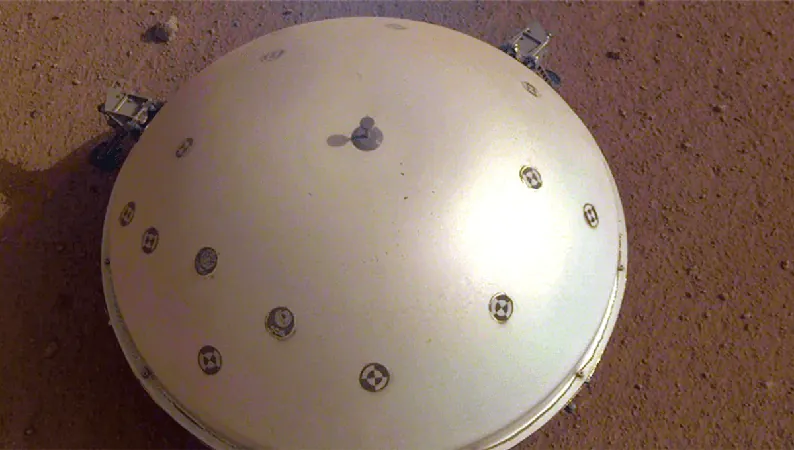
Shocking Discovery: Mars Might Have a Solid Inner Core Just Like Earth!
2025-01-15
Author: Li
Groundbreaking Study Reveals Mars's Inner Core Structure
A groundbreaking new study has emerged from data generated by NASA's Interior Exploration using Seismic Investigations, Geodesy, and Heat Transport (InSight) Lander, proposing the thrilling possibility that Mars has a solid inner core—much akin to Earth's structure!
Insights from the InSight Mission
Since its launch in 2018, the InSight mission has been pivotal in uncovering the mysteries of Mars's subterranean composition through the analysis of seismic vibrations produced by marsquakes. By evaluating how these seismic waves travel through the Martian planet, scientists are able to unravel crucial information about Mars's crust, mantle, and core.
Challenging Previous Assumptions
Previously, researchers interpreted data from InSight to suggest that Mars might possess a liquid core. This idea stemmed from various observations, including Mars's highly magnetized ancient crust, coupled with the unsettling absence of a global dynamo magnetic field, which raises intriguing questions about the conditions in Mars's interior. In particular, some scientists contend that the core's high concentration of light elements could indicate a liquid state.
New Evidence for a Solid Inner Core
However, a team from the University of Science and Technology of China and the University of Texas at Austin has challenged this narrative, presenting compelling evidence that Mars may indeed feature a solid inner core. Exploiting a wealth of low-frequency marsquake data for their analysis, the researchers employed a technique called 'array analysis' to identify unique seismic wave patterns—leading to the startling conclusion that the core might make up about 18% of Mars's radius, closely resembling Earth's inner core, which is approximately 19% of its radius.
Implications of Core Formation
But that's not all—there's a tantalizing twist! The researchers highlight that while the sizes of the inner cores are comparable, their formation processes may vary significantly. They propose two intriguing scenarios: 1. In a lower Martian geothermal context, a solid iron-rich phase could solidify from the top, creating a 'snow formation zone' where dense droplets of solid iron descend to form an inner core. 2. In contrast, if sulfur levels in the core are notably high (around 16%), the solidification process might initiate from the bottom up, influenced by steeper melting curves.
Significance of Further Research
Despite its groundbreaking implications, this study raises significant questions about the planetary dynamics at play. If Mars's inner core is confirmed to be solid, it could provide vital clues to understand why the Red Planet lacks a global magnetic field—an enigma that separates it so starkly from Earth.
The Ongoing Quest for Knowledge
As the importance of this research unfolds, experts emphasize the need for further peer-reviewed validation and exploration. The quest to understand Mars's inner workings is not merely an academic exercise; it could redefine our knowledge about planetary formation and the essential differences between Earth and its rocky neighbors in the solar system.
Stay tuned as science continues to unveil secrets from our cosmic neighbors and challenges everything we thought we knew about our universe!



 Brasil (PT)
Brasil (PT)
 Canada (EN)
Canada (EN)
 Chile (ES)
Chile (ES)
 Česko (CS)
Česko (CS)
 대한민국 (KO)
대한민국 (KO)
 España (ES)
España (ES)
 France (FR)
France (FR)
 Hong Kong (EN)
Hong Kong (EN)
 Italia (IT)
Italia (IT)
 日本 (JA)
日本 (JA)
 Magyarország (HU)
Magyarország (HU)
 Norge (NO)
Norge (NO)
 Polska (PL)
Polska (PL)
 Schweiz (DE)
Schweiz (DE)
 Singapore (EN)
Singapore (EN)
 Sverige (SV)
Sverige (SV)
 Suomi (FI)
Suomi (FI)
 Türkiye (TR)
Türkiye (TR)
 الإمارات العربية المتحدة (AR)
الإمارات العربية المتحدة (AR)